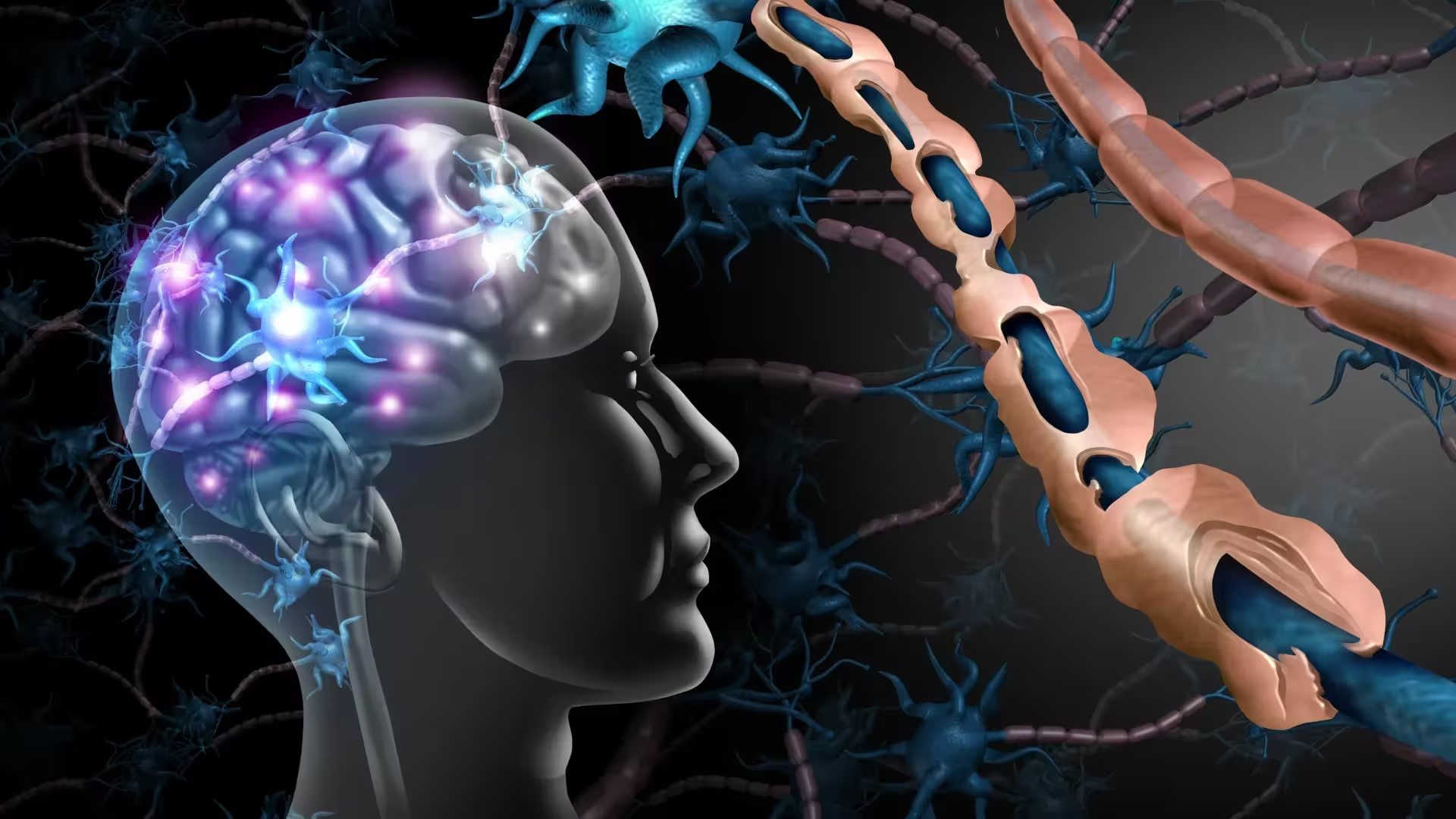5 Minutes
New research from the University of California, San Francisco, shows that multiple sclerosis can begin damaging the brain years before clinical symptoms appear. By scanning thousands of blood proteins, researchers traced an early immune attack on myelin and identified specific markers that signal nerve injury long before diagnosis.
A silent attack revealed by blood proteins
Multiple sclerosis (MS) is often diagnosed only after a person develops neurological symptoms such as vision changes, weakness, or numbness. But what if the disease had already been active for years? UCSF scientists asked that very question and turned to a large biobank of stored blood samples to find the answer.
Using the U.S. Department of Defense Serum Repository — a valuable resource that preserves blood drawn from military applicants over decades — the team analyzed more than 5,000 circulating proteins in samples from 134 people who later developed MS. This proteomic approach allowed the researchers to detect subtle biological changes well before patients presented with symptoms.
The timeline they constructed was striking. About seven years before clinical diagnosis, levels of MOG (myelin oligodendrocyte glycoprotein) rose in the blood, indicating that the immune system had already begun to damage the myelin sheath that insulates nerve fibers. Roughly a year later, neurofilament light chain — a well-established marker of axonal or nerve-fiber injury — increased, suggesting that the attack had progressed beyond the myelin to the underlying neurons themselves.
Crucially, the team also observed elevated immune signaling molecules in that early window. One standout was IL-3, an immune cytokine associated with recruiting and activating white blood cells. The presence of IL-3 and related proteins paints a picture of an immune-driven assault on the central nervous system occurring quietly, years before people typically seek care.

Why these markers matter: MOG, IL-3 and neurofilament light
Understanding the sequence — myelin injury signaled by MOG, a later rise in neurofilament light chain, and concurrent immune signals like IL-3 — reframes how researchers think about MS onset. Briefly:
- MOG: a protein on myelin-producing cells whose fragments in blood suggest early demyelination.
- IL-3: an immune-modulating cytokine that appears to be involved in recruiting inflammatory cells into the brain and spinal cord.
- Neurofilament light chain: a marker of axonal damage that often correlates with long-term disability when elevated.
By mapping these changes over time, the UCSF team produced the most detailed preclinical timeline of MS yet. The study, published in Nature Medicine on Oct. 20, 2025, used longitudinal blood sampling to reveal that the disease process begins much earlier than clinicians can detect through symptoms or routine imaging alone.
Toward a predictive blood test and new prevention strategies
From the proteomic scan, researchers identified roughly 50 proteins that indicate early disease activity and narrowed that list to 21 robust markers for potential clinical use. The team has filed for a patent covering a diagnostic blood test based on these markers, aiming to create a tool that could identify people at risk years before symptoms develop.
'We think our work opens numerous opportunities for diagnosing, monitoring, and possibly treating MS earlier than ever before,' said Ahmed Abdelhak, MD, assistant professor of Neurology at UCSF and co-lead author of the paper. His co-author Ari Green, MD, chief of the Division of Neuroimmunology and Glial Biology at UCSF, added that knowing MS starts much earlier raises the potential to shift from reaction to prevention: 'We now know that MS starts way earlier than the clinical onset, creating the real possibility that we could someday prevent MS — or at least protect people from further injury.'
If a validated blood test becomes available, it could change clinical practice by:
- Allowing targeted surveillance for people at heightened risk.
- Triggering early interventions that aim to slow or stop immune-mediated injury.
- Improving enrollment and timing in clinical trials for preventive therapies.
However, challenges remain. Translating proteomic signatures into a routine clinical assay requires large, diverse validation cohorts and careful assessment of false positives, as well as ethical frameworks for informing people who are at risk but asymptomatic.
Expert Insight
'This study is a textbook example of how long-term biobanks can illuminate disease trajectories,' said Dr. Elena Morales, a neuroimmunologist at a major research hospital who was not involved in the UCSF study. 'Detecting immune signals and myelin fragments years ahead of symptoms gives us a chance to rethink prevention. But we must balance optimism with rigorous validation: any screening tool needs to be precise and paired with clear guidance about next steps for people who test positive.'
For patients and families, the research offers both hope and a roadmap. By turning blood proteins into early-warning signals, scientists are moving closer to catching MS in its first moves — when interventions might be most effective at preserving brain and spinal cord health.
Source: sciencedaily
Comments
skyspin
is this even true? sounds promising but worried about false positives and anxiety for folks who test +. more studies needed
labcore
wow, didn't expect MS to be active years before symptoms. hopeful this leads to prevention, but nervous too..


Leave a Comment